Abstract
An assay has been developed for the proteinase inhibitor-inducing factor (PIIF), a wound hormone. PIIF is present in tomato (Lycopersicum esculentum var. Bonnie Best) leaf extracts and induces accumulation of proteinase Inhibitor I when the extracts are supplied briefly to excised leaves that are subsequently incubated in water under constant light. An active water-soluble crude PIIF solution was conveniently prepared from autoclaved and lyophilized tomato leaves. Accumulation of Inhibitor I, induced by crude PIIF, is linear, commencing at about 8 to 10 hours after feeding and continues for several hours. Evidence is presented that the PIIF-induced accumulation of Inhibitor I, determined immunologically, is accompanied by the accumulation of other trypsin and chymotrypsin inhibitors, determined enzymatically. The accumulation of Inhibitor I is inhibited by actinomycin D and cycloheximide but not by chloramphenicol or rifampin. PIIF cannot be replaced by traumatin, indoleacetic acid, gibberellic acid, kinetin, ethylene, or abscisic acid. PIIF activity was not destroyed by incubation with a number of proteolytic, carbohydrase, phosphatase, or pyrophosphatase enzymes. The active substance is insoluble in lipid solvents.
Full text
PDF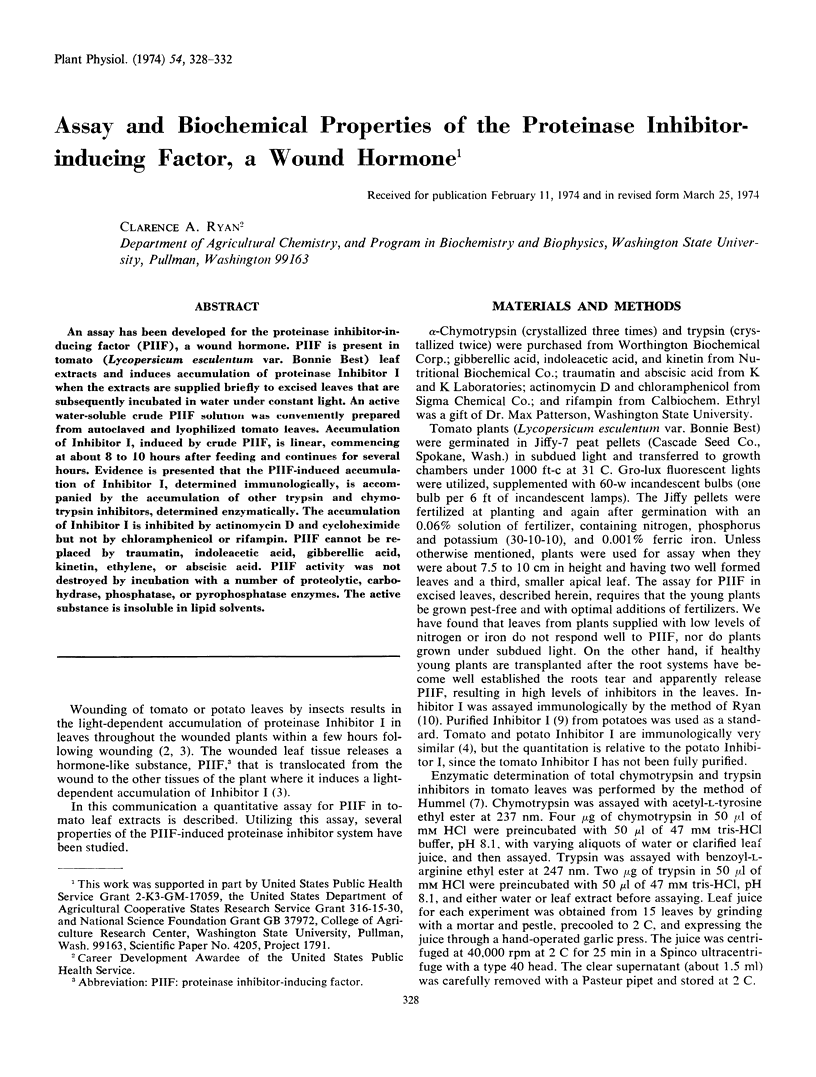
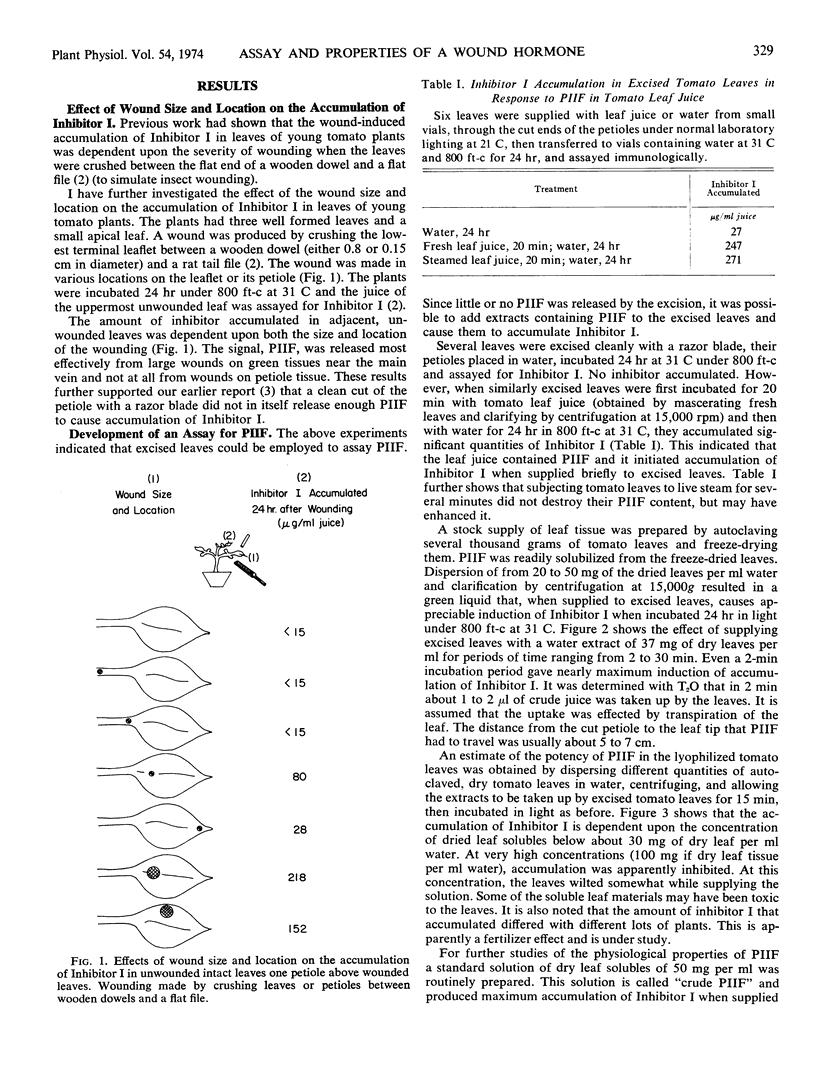
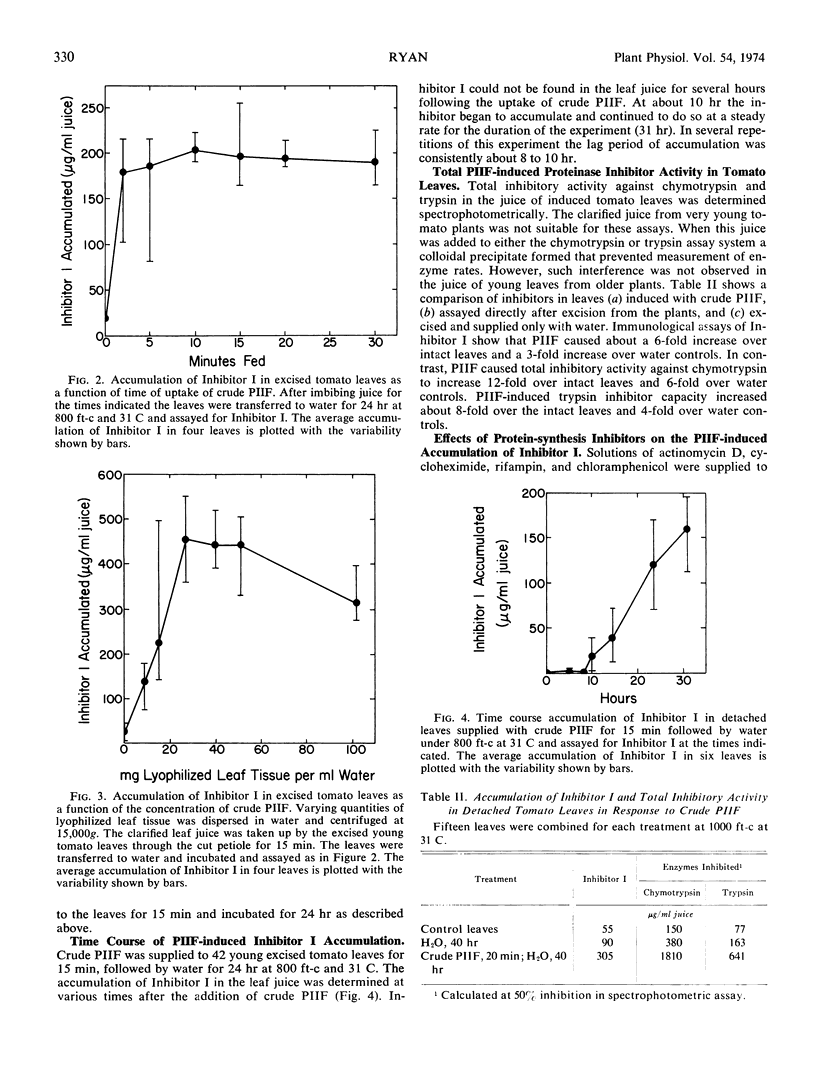
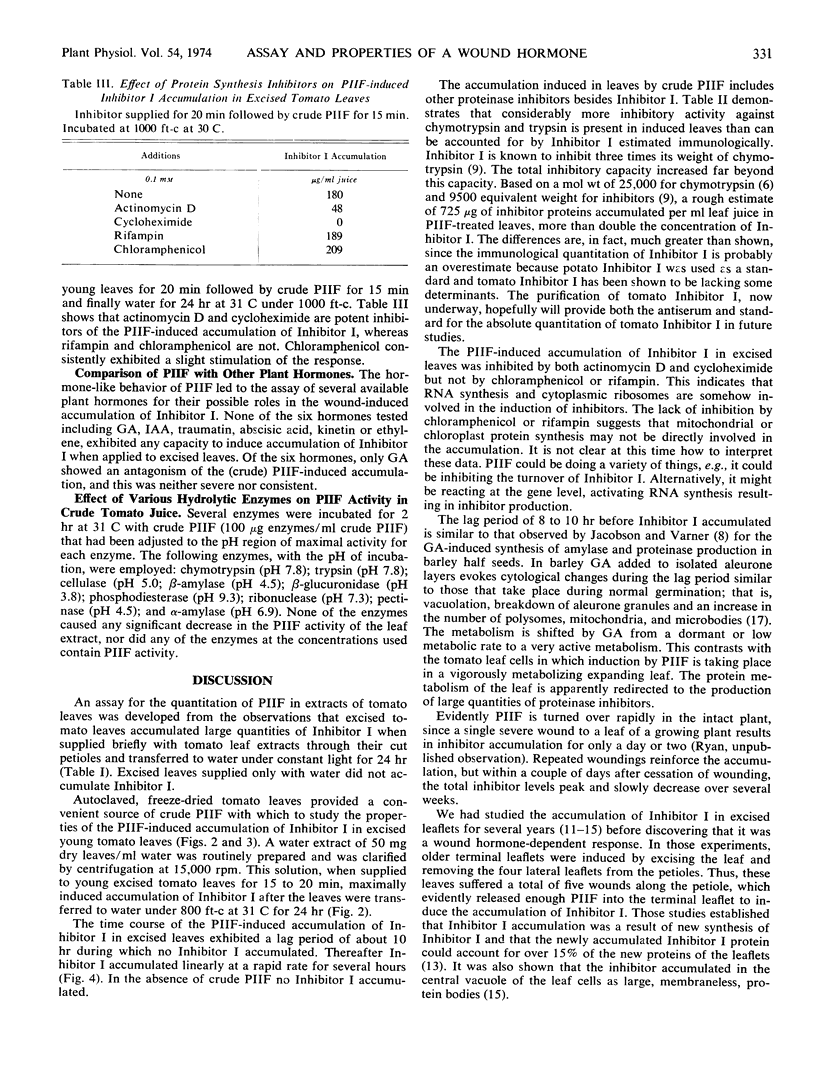
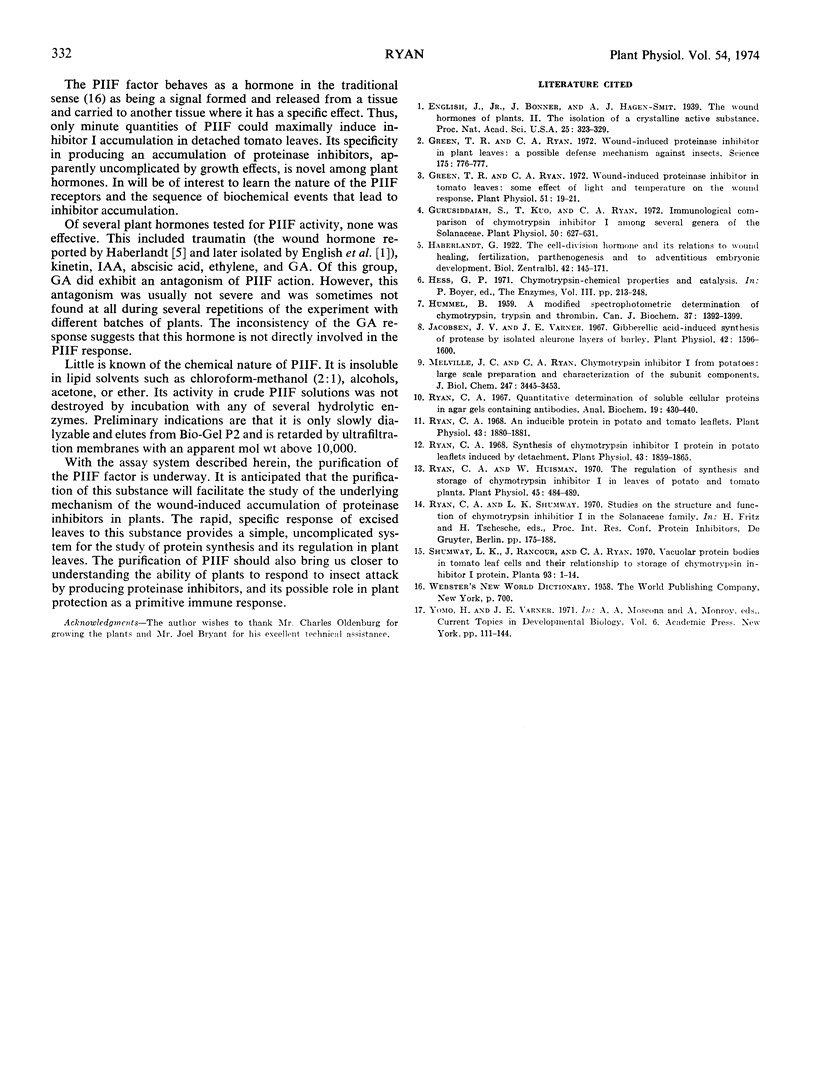
Selected References
These references are in PubMed. This may not be the complete list of references from this article.
- English J., Bonner J., Haagen-Smit A. J. The Wound Hormones of Plants: II. The Isolation of a Crystalline Active Substance. Proc Natl Acad Sci U S A. 1939 Jul;25(7):323–329. doi: 10.1073/pnas.25.7.323. [DOI] [PMC free article] [PubMed] [Google Scholar]
- Green T. R., Ryan C. A. Wound-Induced Proteinase Inhibitor in Plant Leaves: A Possible Defense Mechanism against Insects. Science. 1972 Feb 18;175(4023):776–777. doi: 10.1126/science.175.4023.776. [DOI] [PubMed] [Google Scholar]
- Green T. R., Ryan C. A. Wound-induced Proteinase Inhibitor in Tomato Leaves: Some Effects of Light and Temperature on the Wound Response. Plant Physiol. 1973 Jan;51(1):19–21. doi: 10.1104/pp.51.1.19. [DOI] [PMC free article] [PubMed] [Google Scholar]
- Gurusiddaiah S., Kuo T., Ryan C. A. Immunological Comparisons of Chymotrypsin Inhibitor I among Several Genera of the Solanaceae. Plant Physiol. 1972 Nov;50(5):627–631. doi: 10.1104/pp.50.5.627. [DOI] [PMC free article] [PubMed] [Google Scholar]
- Jacobsen J. V., Varner J. E. Gibberellic Acid-induced synthesis of protease by isolated aleurone layers of barley. Plant Physiol. 1967 Nov;42(11):1596–1600. doi: 10.1104/pp.42.11.1596. [DOI] [PMC free article] [PubMed] [Google Scholar]
- Ryan C. A. An inducible protein in potato and tomato leaflets. Plant Physiol. 1968 Nov;43(11):1880–1881. doi: 10.1104/pp.43.11.1880. [DOI] [PMC free article] [PubMed] [Google Scholar]
- Ryan C. A., Huisman W. The regulation of synthesis and storage of chymotrypsin inhibitor I in leaves of potato and tomato plants. Plant Physiol. 1970 Apr;45(4):484–489. doi: 10.1104/pp.45.4.484. [DOI] [PMC free article] [PubMed] [Google Scholar]
- Ryan C. A. Quantitative determination of soluble cellular proteins by radial diffusion in agar gels containing antibodies. Anal Biochem. 1967 Jun;19(3):434–440. doi: 10.1016/0003-2697(67)90233-3. [DOI] [PubMed] [Google Scholar]
- Ryan C. A. Synthesis of chymotrypsin inhibitor I protein in potato leaflets induced by detachment. Plant Physiol. 1968 Nov;43(11):1859–1865. doi: 10.1104/pp.43.11.1859. [DOI] [PMC free article] [PubMed] [Google Scholar]


